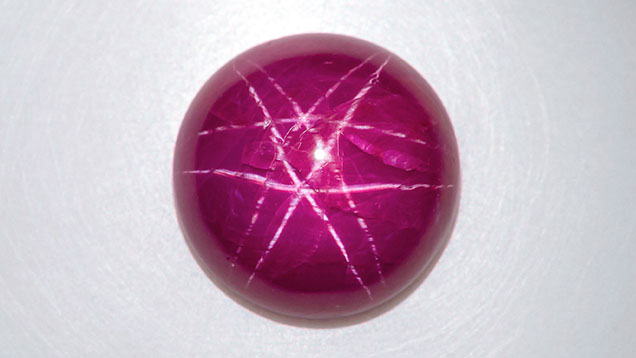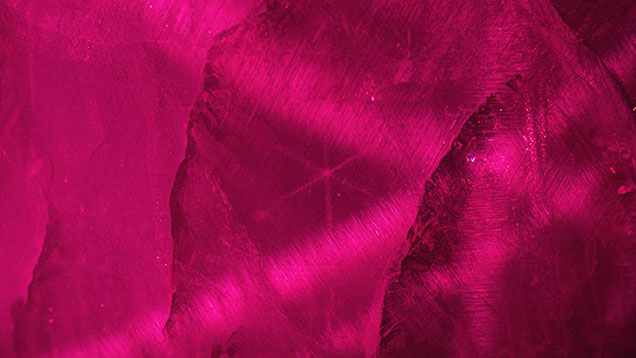Fireworks in Ruby

In the world of gemology, double-star corundum stands out as one of the rarest and most prized varieties of corundum, exhibiting two intersecting stars that dance across the surface. The effect resembles miniature fireworks in a gemstone. The double star is caused by needle-like inclusions of minerals such as rutile or hematite-ilmenite arranged in two orientations near the curved dome of the cabochon. When light reflects and scatters through these inclusions, it creates two intersecting white six-rayed stars.
Another type of double-star effect has two differently colored six-rayed stars, also known as dual-color double stars. One is a white star positioned near an upper layer of the cabochon’s dome, while the other is a bodycolored star that seems to emanate from the back of the stone. This phenomenon occurs when light travels twice through the polished curved base of the cabochon, which contains needle-like inclusions and a matrix of corundum with trace elements determining its bodycolor. It produces a second star with color resulting from the host stone’s color (K. Schmetzer et al., “Dual-color double stars in ruby, sapphire, and quartz: Cause and historical account,” Summer 2015 G&G, pp. 112–143).

Recently, the author examined an unheated 11.43 ct purplish red round ruby cabochon that displayed a twelve-rayed double-star phenomenon (figure 1). The white color of this double star indicates that both stars formed near the curved dome surface. Alongside inclusions commonly found in rubies were interesting particle inclusions arranged in a streamer-like pattern revealed by fiber-optic illumination. These particles formed their very own six-rayed star pattern (figure 2), adding unexpected fireworks to the stone. This discovery serves as a reminder that nature is full of surprises just waiting to be uncovered.



